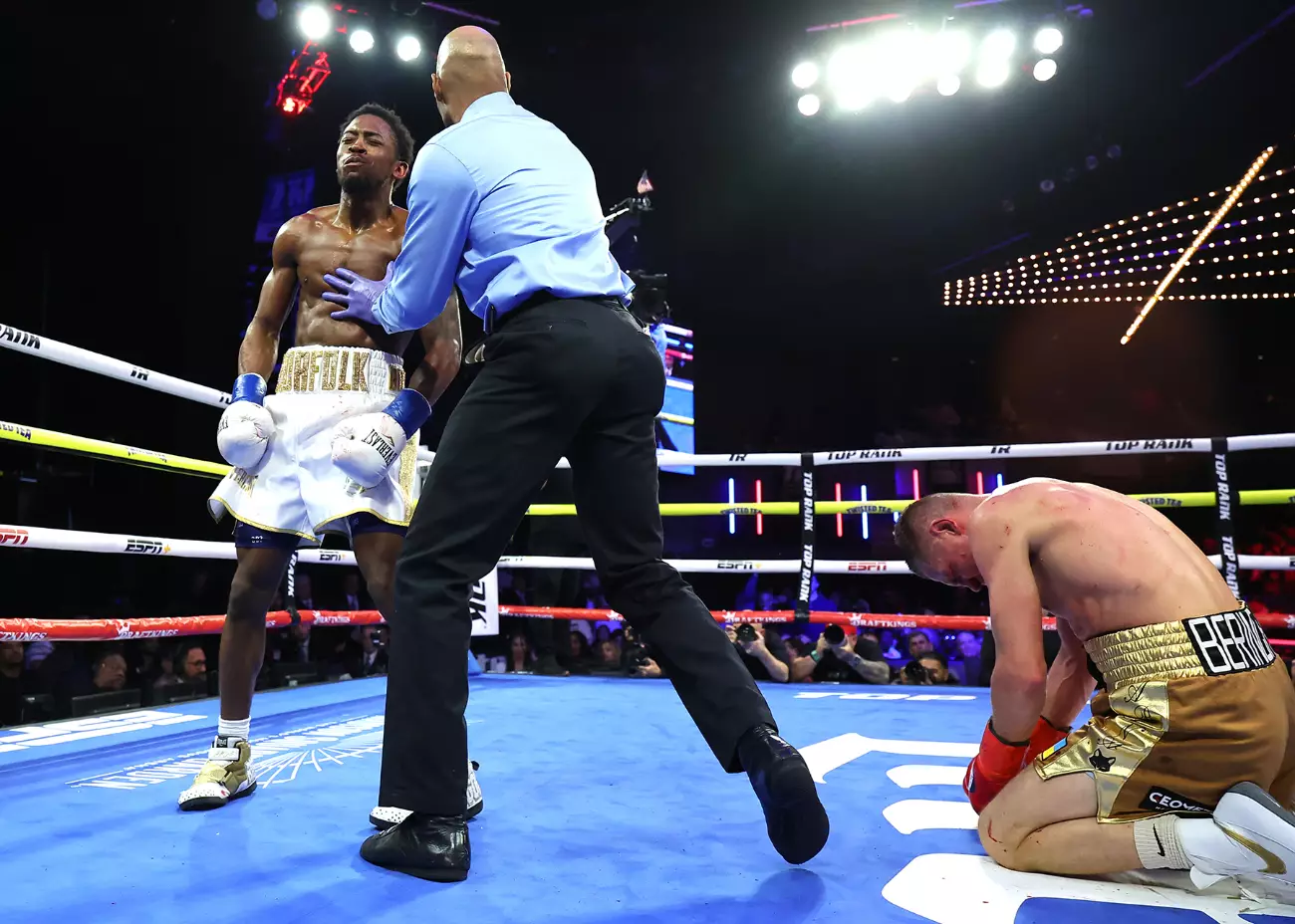In the heart of New York City at Madison Square Garden Theater, Keyshawn Davis showcased his prowess in the boxing ring, overcoming WBO lightweight champion Denys Berinchyk in a display that was as much a spectacle as it was a masterclass in boxing technique. With a record of 13-0 and nine of those wins coming by knockout, Davis emerged victorious by stopping Berinchyk in the fourth round, marking a significant milestone in his young career. The fight was marred by the weight disparity between the fighters; at 160 pounds after rehydration, Davis appeared not just larger but physically formidable compared to his opponent, who struggled to cope with this size differential.
Davis knocked Berinchyk down twice with strategic left hooks focused on the body. The first knockdown came in the third round, serving as a warning sign for the champion, who was ultimately edged out of the match at 1:45 of the fourth round after a devastating left to the liver. This victory seems to underline Davis’s growing reputation as a future contender in the lightweight division, bringing to the forefront questions about weight management and the implications of being a “weight bully.”
Call for Big Fights
Following his impressive win, Keyshawn Davis’s eyes are now set on two of the biggest stars in boxing: IBF champion Vasily Lomachenko and WBA champion Gervonta Davis. In a post-fight interview, Davis confidently challenged both champions, declaring his willingness to face them if they have the courage to step into the ring with him. For many fans and analysts, however, the probability of this match happening seems grim, especially considering the physicality Davis displayed in the ring, which could intimidate potential opponents.
His desire to fight recognized names such as Isaac “Pitbull” Cruz offers an insight into his career strategy, but it raises relevant concerns about the potential implications for Cruz, who could be operating at a severe disadvantage. The prospect of these matchups ought to be approached with caution, particularly around issues of fighter health and safety, as weight disparities in boxing can lead to devastating outcomes.
The Weight of Expectations
Weight management remains a crucial topic in boxing, particularly when it comes to ensuring fighter safety. The lack of a rehydration clause in the WBO regulations begs the question of what measures are necessary to protect boxers in the lower weight classes from those who may take advantage of the system. Observers noted Davis’s apparent struggle to make the 135-pound limit, leading to unsettling comparisons to middleweight fighters. The current regulations—or lack thereof—around weight disparities could create dangerous scenarios in the ring, and there is a clear need for boxing organizations to implement more stringent measures similar to those of the IBF.
Davis himself has acknowledged the challenges posed by the weight cut, admitting that the process left him looking emaciated at the weigh-in. This reality is not uncommon in boxing, where fighters often undergo drastic measures to make weight, only to rehydrate significantly before the fight. The dangers of such extreme cut and rehydrate cycles could have lasting impacts on fighters’ health, prompting discussions among enthusiasts and professionals about what reforms could be enacted.
Despite the challenges surrounding weight classes and matchups, Keyshawn Davis has established himself as a formidable talent in the lightweight division. His dominance against Berinchyk raises exciting possibilities for his future bouts against top-ranked competitors. However, the community of boxing must remain vigilant regarding the implications of size and weight in the sport. As Davis pursues his ambition to become a champion, the discussions surrounding the frameworks of boxing must push towards safeguarding the athletes who dedicate their lives to the sport.
Ultimately, Davis’s victory is just a chapter in his evolving story, prompting reflections on not just his prowess in the ring, but the broader implications of how weight classes operate within the sport, and how they could improve to foster safer environments for athletes dedicated to this grueling yet glorious endeavor.

